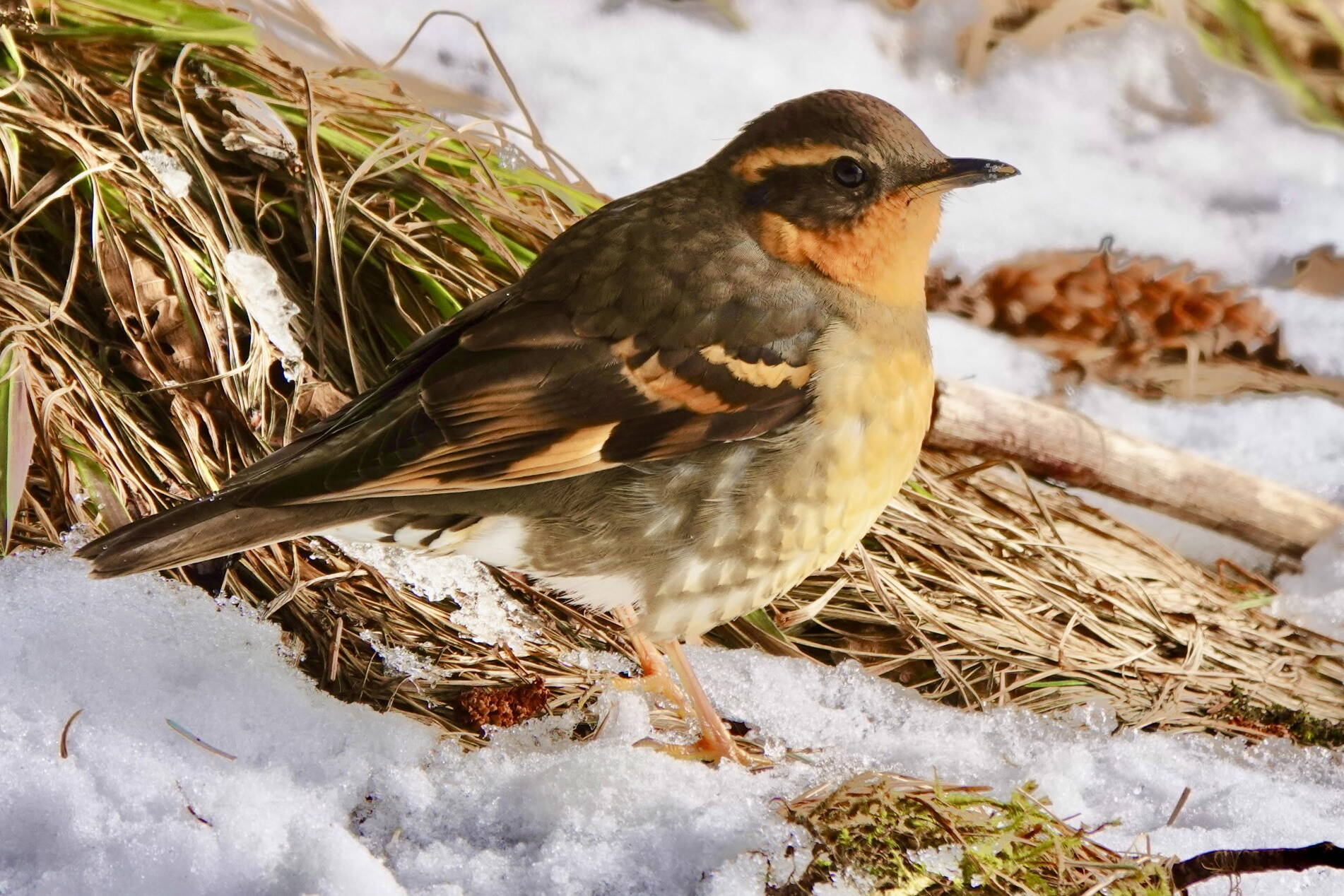The ground is heavily blanketed with snow. The snow berms in my driveway (and, dangerously, at some street intersections too) are still over six feet high. Skiers streak by, over in the campground. And the flocks of redpolls are still here, cleaning out a quart of seed in a couple of hours.
But the days are perceptibly longer and the critters know it. We see pairs of eagles sitting companionably together on a branch; one pair was bringing small sticks to an old nest that needed refurbishment. Two pairs of mallards have been visiting my still-ice-covered pond, hanging out in the bit of open water by the little dam. They venture out onto the ice to feed on fallen bird seed.
All winter long, I’ve had one squirrel visiting my feeders, stealing peanut butter from the birds and scavenging fallen sunflower seeds. She (I think it’s a she) made tunnels through the heaps of snow under my deck, perhaps to get protected access to seeds on the ground.
Now I’ve started to see not one but two – or even three! —squirrels in my yard, usually engaging in long chases. It’s that time of year for them too. The strict territorial defenses weaken, borders are ignored, and the chases are on. If they work things out well, a litter may be born in five or six weeks later.
Plants are showing visible seasonal responses too; the leaf buds of cottonwood and alder are noticeably fatter than their winter slim-ness and a bit of green peeps out of a few leaf buds. In a few places, alder catkins are no longer stiff and almost upright but hanging down, tightly closed but getting ready to open up and release pollen. And on the tall blueberry shrubs, there are a few stems showing red with green buds.
Out on the Dike Trail, in addition to some ducks, we initially saw numerous small groups of geese, scattered all over the meadow. Later, however, most of those groups had coalesced into a mob of maybe three hundred or so, all grubbing into the upper soil, perhaps seeking sedge roots. Suddenly, some of that mob took flight, circling widely before landing. We noticed that the only geese that took to the air were the ones directly below the flight path of an eagle. All the foragers to the sides of that flight path stayed put and the disturbed part of the flock quickly returned to their feeding sites. This was the first time this year that I have seen such large numbers of geese out there, suggesting that the migration season has begun for them.
A few days later, still in mid-February, as I set out with another friend to walk the dike trail, my sharp-eared friend heard a junco singing from the top of a tree near the edge of the wetlands. Juncos typically stay here all winter, foraging on whatever seeds they can find, including those offered at seed feeders. They are among the first songbirds to try out their voices as spring approaches. So this was a real treat.
Those annual harbingers of spring, the Varied Thrushes, have been here at least since the time when the big snows fell this winter, and some of them may have stayed here all winter, as they are known to do sometimes. They are beginning to appear in several places now, indicating that more of them may be arriving. But no reports yet of singing. So start listening for them…they may be a bit subdued at first, before revving up to full song.
Is it just possible that I’m a bit impatient for springtime’s fun and so I’m seeking signs that it will really happen?
• Mary F. Willson is a retired professor of ecology. “On The Trails” appears every Wednesday in the Juneau Empire.

